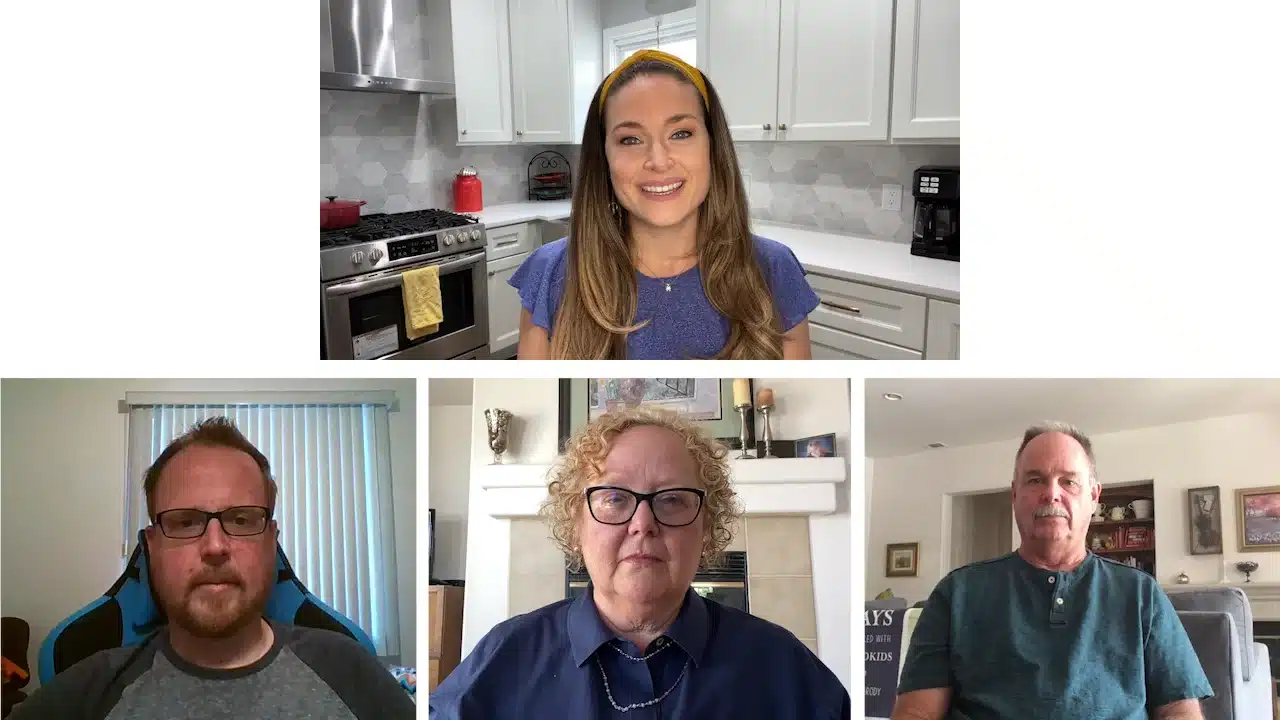< Back to Diagnosing Epilepsy Forward to Treatments and Therapies >
How Are Seizures and Epilepsy Diagnosed?
Diagnosing seizures and epilepsy can be challenging, as the type of seizure and its cause are not always clear. If you suspect you’ve had a seizure or if others have noticed periods when you seem unaware of your actions, it’s crucial to consult a doctor.
A healthcare provider will evaluate your symptoms to determine if a seizure occurred and identify any underlying causes. For instance, seizures can sometimes be triggered by other medical conditions, such as diabetes, which would require treatment for that specific condition.
If epilepsy is suspected, your doctor may recommend diagnostic tests like EEGs or MRIs and may prescribe medications to help prevent future seizures. Early diagnosis and treatment are essential for managing symptoms effectively and improving quality of life.
Diagnostic Tests for Epilepsy
Diagnosing epilepsy requires a combination of tests that help distinguish it from other conditions.
Find out more about Epilepsy Diagnostic Tools and Tests
Here are some of the most common tests used for diagnosing epilepsy:
Electroencephalogram (EEG) for Epilepsy
An EEG is one of the most crucial tests for epilepsy diagnosis. It records electrical activity in the brain, identifying unusual patterns that may indicate a seizure disorder. During an EEG, electrodes are placed on the scalp, and the test records brain wave patterns that are searched for abnormalities
- Purpose: Detects irregular brain waves associated with epilepsy
- What it Involves: Patients may undergo this test while awake or asleep to capture any seizure activity
- Benefits: Non-invasive, reliable, and effective in identifying seizure patterns
Magnetic Resonance Imaging (MRI) for Epilepsy
MRI uses powerful magnets and radio waves to create detailed images of the brain’s structure. This imaging test is particularly useful in identifying physical brain abnormalities or lesions that could be causing seizures.
- Purpose: Provides detailed brain imaging to identify possible structural causes of seizures
- What it Involves: Patients lie in an MRI machine while images are taken
- Benefits: Helps epileptologists detect structural issues or scarring that may lead to epilepsy
Computed Tomography (CT) Scan for Epilepsy
A CT scan is often used in emergency situations to identify any potential brain injuries or bleeding that could trigger seizures.
- Purpose: Provides a quick scan to rule out other causes of seizures
- What it Involves: Patients lie still while the machine takes multiple cross-sectional images
- Benefits: Useful in acute settings; can rule out other neurological issues
Blood Tests for Epilepsy
Although blood tests do not directly diagnose epilepsy, they help rule out other potential causes of seizures, such as infections, metabolic disorders, or genetic conditions.
- Purpose: Identifies conditions that might mimic or contribute to seizure activity
- Benefits: Useful in guiding further diagnostic steps and understanding underlying health conditions
Neuropsychological Testing for Epilepsy
Neuropsychological tests assess cognitive and memory functions. They can provide insight into how epilepsy affects brain function, which is particularly useful for tailoring treatment plans.
- Purpose: Evaluates memory, attention, and cognitive processing
- Benefits: Offers a holistic view of how epilepsy impacts daily life
Who can Diagnose Epilepsy?
Epilepsy can be diagnosed by a variety of medical professionals in various medical settings, ranging from doctors in the emergency room to epileptologists in an epilepsy monitoring unit (EMU).
Medical Doctors and their Role in Epilepsy
While many people may go to the emergency room after experiencing their first seizure, there are several medical settings in which epilepsy can be diagnosed. In this section, we’ll explore the different types of doctors who may be involved in the diagnostic process and the role they play:
Emergency Department (ED) Physician
When a person has their first seizure, oftentimes an ambulance will be called to transport them to the emergency department where they’ll likely be seen by an emergency physician.
The physicians will ask questions about the event, as well as questions to rule out any serious or life-threatening conditions. If the patient cannot remember details about the seizure, they may ask witnesses to describe what they saw, from how long it lasted to any physical movements that may have occurred. In some cases, a neurologist may be called in for a consult.
If the doctors rule out additional conditions, the patient may be told that they’ve experienced a seizure. The emergency physician may ask them to schedule a follow-up visit with their primary care physician or may refer them directly to a neurologist.
This could be the first time that the word “epilepsy” is used to describe what the patient has experienced.
Primary Care Physicians (PCPs) / Pediatrician
Many people see their primary care physician (PCP) or pediatrician after an emergency department visit, or because they’ve experienced a clinical event they’re concerned about.
- A primary care physician is a medical doctor who specializes in family and general internal medicine.
- Pediatricians are medical doctors with specialized training in treating the physical and emotional health of children.
Both types of physicians are trained to prevent, diagnose, and treat a wide range of illnesses in adults and children.
Regardless of whether a patient was referred from the ED, the PCP (or pediatrician) will review the patient’s medical history and may perform thorough tests, such as a physical exam, bloodwork, and an echocardiogram.
The PCP or pediatrician may diagnose the patient and prescribe anti-seizure medications (ASMs). Many times, the ASMs provide sufficient reduction in seizures or seizure freedom, and further diagnostic tests are not needed.
Neurologist / Pediatric Neurologist
If the patient has been taking their medication as prescribed and it does not lead to significant seizure reduction – or seizure freedom – within three months, the patient may be referred to a neurologist for further testing.
Neurologists are medical doctors that are certified by the American Board of Psychiatry and Neurology to specialize in treating disorders of the brain. To become a neurologist, doctors must complete medical school and a one-year general internship before completing three additional years of specialized neurology training and obtaining their certification1.
Similarly, pediatric neurologists have also completed additional, specialized training. After medical school, they complete a 2-year general internship in pediatrics and then 3 additional years of specialized child neurology training. Pediatric neurologists are certified by either the American Board of Psychiatry and Neurology or the American Board of Pediatrics.
Currently, more than 18,000 neurologists are working in the US.
Because neurologists specialize in treating disorders of the brain and nervous system, they are much more familiar with diagnosing and treating epilepsy than emergency or primary care physicians. It is estimated that 40-50% of the patients seen in a typical child neurologist practice have epilepsy2.
A neurologist/pediatric neurologist will perform a thorough history and physical examination on a patient who has had an unprovoked first seizure3. It is always helpful to have a witness or video of the seizure to share with the physician. Next, the physician will look to confirm that the seizure was unprovoked by confirming that factors such as sleep deprivation, fever, alcohol, or drugs did not contribute. Other tests, such as an MRI, may be performed.
If the patient isn’t already on an ASM from the emergency physician or their PCP/pediatrician, the neurologist will discuss starting ASM or delaying treatment until a second seizure occurs. Risk factors such as the likelihood of having another seizure are weighed against the risk of medication side effects and impacts on quality of life when making that decision.
The neurologist has many (35+) antiseizure medications to choose from based on the type of seizure, the side effects of the medication, and other patient-related factors.
Epileptologist
An epileptologist is a neurologist or pediatric neurologist that has received additional, specific training in diagnosing and treating various types of epilepsy. For epilepsies that are difficult to treat or are complex, an epileptologist may have access to clinical trials and experimental therapies to provide additional options to people with epilepsy.
Epilepsy is a sub-specialty within neurology, and epileptologists are board-certified in neurology with “Added Qualifications” in either epilepsy or clinical neurophysiology.
Individuals that have not achieved seizure control or are experiencing unbearable side effects may be referred to or seek out an epileptologist. People with epilepsy who are also pregnant, or people with rare genetic epilepsy syndromes such as Angelman syndrome or Doose syndrome may also seek out an epileptologist. While some epileptologists are in private or group practice, most are connected with hospitals and academic institutions which have epilepsy centers of care.
Epilepsy Centers
If a person’s seizures are not controlled after three months of treatment by a PCP, or after 12 months of treatment by a neurologist, they should be referred to an Epilepsy Center.4 In addition to the epileptologists, Epilepsy Centers have a team of experts comprised of psychologists, neuropsychologists, nurses, social workers, nutritionists, and sometimes, even support for the caregivers.
The National Association of Epilepsy Centers (NAEC) is a non-profit organization that established guidelines and standards of care for epilepsy centers. The NAEC recognizes four levels of epilepsy care, and they have established an accrediting system to designate centers that meet the Level 3 and Level 4 care standards.5
Level 3 Epilepsy Center
Provides medical, psychiatric, and psychological treatment and support for patients. Some non-complicated types of epilepsy surgery may also be done at Level 3 Epilepsy Centers.3
Level 4 Epilepsy Center
In addition to all the services offered at Level 3 centers, Level 4 Epilepsy Centers have facilities for intense evaluation before epilepsy surgery and the capability for even complicated epilepsy surgery.3
Epilepsy Monitoring Unit (EMU)
What is an EMU?
An Epilepsy Monitoring Unit (EMU) is a type of inpatient service at a hospital where a team of professionals works together to diagnose a person’s epilepsy. Sometimes, for patients that are considering epilepsy surgery, staying at an EMU may help the doctor to understand where their seizures are coming from.
The team at an EMU is usually comprised of:
- Epileptologist(s)
- Nurse(s)
- Neurosurgeon
- EEG technologist
- Psychiatrist
- Psychologist
- Social worker
The two monitoring techniques typically used at an EMU to diagnose epilepsy are:
- Electroencephalogram (EEG): to capture and understand electrical activity in the brain
- Video monitoring: to match the EEG signals with physical symptoms. Video technology at an EMU has night vision so that the patient can be filmed and monitored during sleep.
What to expect at an EMU?
The patient will undergo sophisticated diagnostic techniques to better understand what is causing the seizure and what is happening in the brain during the seizure. The patient will have EEG sensors placed on their scalp and will have an IV placed in their arm so that medication can be delivered in the case of an emergency. The doctor may ask the patient to stay awake to have a better chance of capturing the seizures. Often, the epileptologist will reduce or hold the ASMs to increase the chances of capturing typical seizures in a safe and monitored environment. Recording seizures is necessary for the epileptologist to identify the type and origin of the seizure.
Patients are usually allowed to have guests and visitors. Parents of children with epilepsy stay with their children in the EMU. Patients are usually allowed to wear their normal clothing. The EEG sensors always have to be kept dry, so you may not be able to shower. However, the nurse or the nursing assistant will ensure you can wash at the sink or in the bathroom off-camera.
The medical team will provide a list of items to bring with you to the EMU, but some items are:
- Medications in their original bottles
- Games, books, puzzles, other activities
- Personal toiletry items
- Comfortable clothing
How long can the EMU stay last?
A typical EMU stay is for 7 or fewer days. In some special circumstances like intracranial EEG monitoring, the sensing electrodes have been placed by a neurosurgeon into the brain to identify the exact location where the seizures start. Intracranial EEG monitoring often takes at least two weeks to complete the necessary tests.4 An EMU allows the doctor to examine a patient’s seizure patterns in a way that is more complete than if the patient were at their home. If the patient’s ASMs need to be changed, the EMU may provide a safe space to do so. EEG and video monitoring are done at an EMU 24 hours a day.
Stay in the Loop
Sign up for our email list and get the latest epilepsy news right to your inbox.
Related Content
References:
- How to become a neurologist Available at: https://www.aan.com/tools-and-resources/medical-students/careers-in-neurology/how-to-become-a-neurologist/#:~:text=A%20neurologist’s%20training%20includes%20a,specialized%20residency%20training%20in%20neurology. Accessed June 16.
- https://www.childneurologyfoundation.org/providers-or-researchers/the-field-of-child-neurology/
- https://acpinternist.org/archives/2015/09/seizures.htm
- Epilepsy Across the Spectrum: Promoting Health and Understanding. England MJ LC, Schultz AM, et al.,, editor. Washington (DC): Institute of Medicine (US) Committee on the Public Health Dimensions of the Epilepsies; 2012.
- https://www.naec-epilepsy.org/about-epilepsy-centers/what-is-an-epilepsy-center/
- What is an Epilepsy Center? Available at: https://www.naec-epilepsy.org/about-epilepsy-centers/what-is-an-epilepsy-center/.
- Moseley BD, Dewar S, Haneef Z, Eliashiv D, Stern JM. Reasons for prolonged length of stay in the epilepsy monitoring unit Epilepsy Research. 2016 2016/11/01/;127:175-178.













